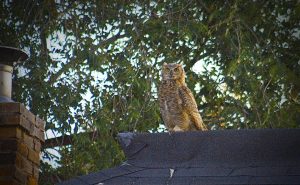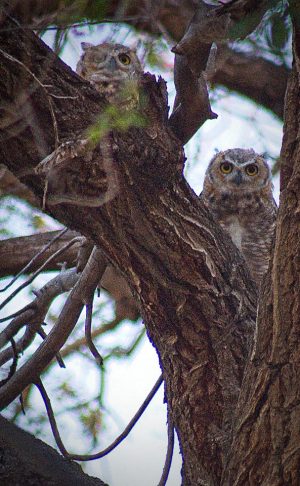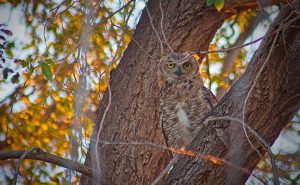Artists have the right to free expression in public
Reminding American artists they have the right to exist, create, and sell their works in public without permits, licenses, fees, and harassment.
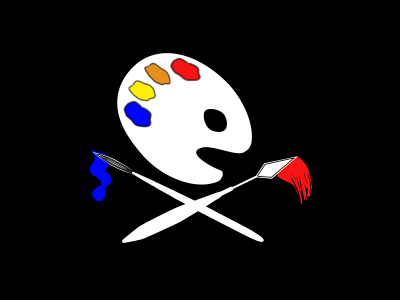
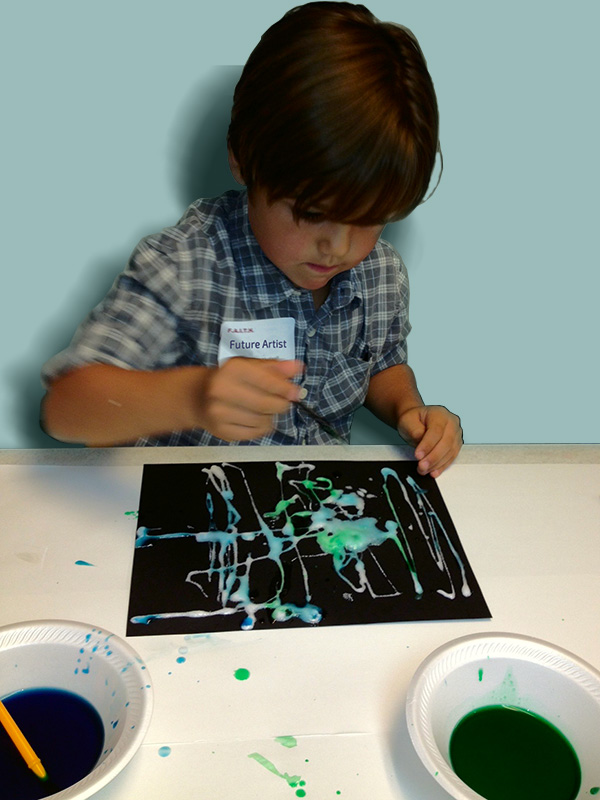
My fellow artists, what if I said you have freedom of speech. I’m sure you would agree. But what if I told you that freedom of speech if you are an artist includes your personal works of art. You might agree, but would likely wonder what I’m getting at.
What if I told you that you can sit in a public place (a park for instance) and be paid for your first amendment free speech protected art. Would that excite you? It does me. Of course the skeptic in me had to really look into it, so here are some links to groups, relevant cases, and rulings:
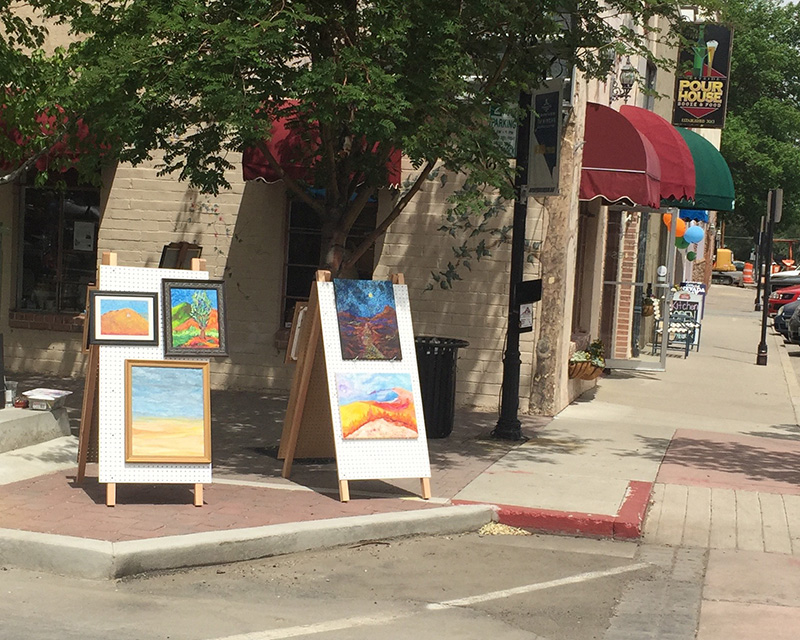
United States Court of Appeals,Ninth Circuit.
Steven C. WHITE, Plaintiff-Appellee, v. CITY OF SPARKS, Defendant-Appellant.
No. 05-15582.
Decided: August 29, 2007
Before: B. FLETCHER and RICHARD R. CLIFTON, Circuit Judges, and EDWARD F. SHEA,District Judge.* Thomas F. Riley, Senior Assistant City Attorney, Sparks, NV, for the defendant-appellant. Terri Keyser-Cooper (argued), Law Office of Terri Keyser-Cooper, Reno, NV, and Diane K. Vaillancourt (briefed), Law Office of Diane K. Vaillancourt, Santa Cruz, CA, for the plaintiff-appellee.
This appeal presents the question of what protection the First Amendment extends to the sale by an artist of his paintings. We hold that an artist’s sale of his original artwork constitutes speech protected under the First Amendment.
I.
Appellee Steven C. White (“White”) is an itinerant artist who earns a living by setting up an easel on a city’s sidewalks and in parks and selling his paintings to passersby who take an interest in his work. A painter of nature scenes, White believes his paintings convey, among other messages, the message that human beings are driving their spiritual brothers and sisters, the animals, into extinction.
The city of Sparks, Nevada (“Sparks”) prohibits the sale of merchandise in its parks and limits sales in the redevelopment area known as Victorian Square to those vendors having permits under Sparks Municipal Code §§ 5.59 et seq. For those without vendor’s permits, Sparks makes a limited exception allowing the display of merchandise in its parks and Victorian Square as well as the sale (in both places) of items that have received the pre-approval of city employees through a First Amendment exception to the vendor-permitting ordinances (“First Amendment exception” or “pre-approval policy”). According to the city, to gain such preapproval an item must be submitted to the city and determined by city officials to convey an express or obvious religious, political, philosophical, or ideological message under Gaudiya Vaishnava Society v. City and County of San Francisco, 952 F.2d 1059, 1063 (9th Cir.1990) (extending First Amendment protection to “the sale of merchandise which carries or constitutes a political, religious, philosophical or ideological message”).1
White brought a facial challenge to Sparks’s vendor-permitting scheme. He then moved for summary judgment on the question of whether he may sell his paintings on the same basis as he may display them, i.e., free of restraint. The city opposed on the ground that White’s paintings are unprotected by the First Amendment because they do not patently express a religious, ideological, political, or philosophical message.
Agreeing for the most part with White and reading Gaudiya broadly, the district court granted White’s motions 2 to the extent he requested a ruling that his paintings expressed a message warranting First Amendment protection. To the extent White requested a global ruling that all visual art is per se constitutionally protected, the district court declined to extend its ruling beyond protection of White’s paintings. Finally, the district court concluded that Sparks’s pre-approval policy constituted an unconstitutional prior restraint because it failed to include objective criteria for approving or rejecting a piece of artwork. Sparks appealed. We have jurisdiction pursuant to 28 U.S.C. § 1291.3
II.
We review de novo a district court’s grant of partial summary judgment, United States v. $100,348.00 in U.S. Currency, 354 F.3d 1110, 1116 (9th Cir.2004), and may affirm on any ground supported by the record, Venetian Casino Resort v. Local Joint Executive Bd. of Las Vegas, 257 F.3d 937, 941 (9th Cir.2001). After “viewing the evidence in the light most favorable to the nonmoving party,” we determine “whether there are any genuine issues of material fact and whether the district court correctly applied the relevant substantive law.” Am. Civil Liberties Union of Nev. v. City of Las Vegas, 333 F.3d 1092, 1097 (9th Cir.2003).
III.
The parties argue over law, not fact. To that extent, summary judgment is appropriate because no genuine issue of material fact existed. We therefore turn to the question of whether the district court “correctly applied the relevant substantive law.” Id. at 1097.
A.
Sparks argues that the First Amendment protects the sale of paintings in public fora only if the paintings convey an explicit-or an implicit but obvious-message that fits into one of the categories we established in Gaudiya. We disagree.
In Gaudiya, we held that First Amendment protection extended to the “sale of merchandise which is inextricably intertwined with a statement carrying a religious, political, philosophical or ideological message.” 952 F.2d at 1066. The merchandise at issue in Gaudiya-clothing, jewelry, and stuffed animals sold as fundraisers by charities and advocacy groups-lacked inherent expressive value and gained expressive value only from its sale being “inextricably intertwined” with pure speech. Id. at 1064. To the extent that visual art is inherently expressive, the Gaudiya test is inapplicable.
While not having spoken directly on the protections afforded visual art, the Supreme Court has been clear that the arts and entertainment constitute protected forms of expression under the First Amendment. See Ward v. Rock Against Racism, 491 U.S. 781, 790, 109 S.Ct. 2746, 105 L.Ed.2d 661 (1989) (music without words); Schad v. Borough of Mount Ephraim, 452 U.S. 61, 65-66, 101 S.Ct. 2176, 68 L.Ed.2d 671 (1981) (dance); Se. Promotions, Ltd. v. Conrad, 420 U.S. 546, 95 S.Ct. 1239, 43 L.Ed.2d 448 (1975) (theatre); Doran v. Salem Inn, Inc., 422 U.S. 922, 932-34, 95 S.Ct. 2561, 45 L.Ed.2d 648 (1975) (topless dancing); Miller v. California, 413 U.S. 15, 34-35, 93 S.Ct. 2607, 37 L.Ed.2d 419 (1973) (serious artistic work, unless obscene in the legal sense); Joseph Burstyn, Inc. v. Wilson, 343 U.S. 495, 501-02, 72 S.Ct. 777, 96 L.Ed. 1098 (1952) (movies).
Against this backdrop, it is clear that White’s self-expression through painting constitutes expression protected by the First Amendment. In painting, an artist conveys his sense of form, topic, and perspective. A painting may express a clear social position, as with Picasso’s condemnation of the horrors of war in Guernica, or may express the artist’s vision of movement and color, as with “the unquestionably shielded painting of Jackson Pollock.” Hurley v. Irish-Am. Gay, Lesbian & Bisexual Group of Boston, 515 U.S. 557, 569, 115 S.Ct. 2338, 132 L.Ed.2d 487 (1995). Any artist’s original painting holds potential to “affect public attitudes,” Joseph Burstyn, Inc., 343 U.S. at 501, 72 S.Ct. 777, by spurring thoughtful reflection in and discussion among its viewers. So long as it is an artist’s self-expression, a painting will be protected under the First Amendment, because it expresses the artist’s perspective.4
In holding that the First Amendment protects an artist’s original paintings, we join two of our sister circuits. See ETW Corp. v. Jireh Pub., Inc., 332 F.3d 915, 924 (6th Cir.2003) (holding that “[t]he protection of the First Amendment ․ includes ․ music, pictures, films, photographs, paintings, drawings, engravings, prints, and sculptures”); Bery v. City of New York, 97 F.3d 689, 696 (2d Cir.1996) (“[P]aintings, photographs, prints and sculptures ․ always communicate some idea or concept to those who view it, and as such are entitled to full First Amendment protection.”); see also Piarowski v. Ill. Cmty. Coll. Dist. 515, 759 F.2d 625, 628-32 (7th Cir.1985) (holding that stained glass windows, as “art for art’s sake,” were protected under the First Amendment).
The city’s argument that the message conveyed must be either explicit or implicit but obvious in order to merit protection must fail. As the Court has explained, “a narrow, succinctly articulable message is not a condition of constitutional protection, which if confined to expressions conveying a particularized message would never reach the unquestionably shielded painting of Jackson Pollock, music of Arnold Schöenberg, or Jabberwocky verse of Lewis Carroll.” Hurley, 515 U.S. at 569, 115 S.Ct. 2338 (internal quotation marks and citation omitted).
Nor are we convinced by the city’s argument that White’s sale of his paintings removes them from the ambit of protected expression. “[T]he degree of First Amendment protection is not diminished merely because the
Finally, even purely commercial speech is entitled to significant First Amendment protection. See Glickman v. Wileman Bros. & Elliott, Inc., 521 U.S. 457, 480-81, 117 S.Ct. 2130, 138 L.Ed.2d 585 (1997); City of Cincinnati v. Discovery Network, Inc., 507 U.S. 410, 421-23, 113 S.Ct. 1505, 123 L.Ed.2d 99 (1993); Va. Bd. of Pharmacy v. Va. Citizens Consumer Council, Inc., 425 U.S. 748, 762, 96 S.Ct. 1817, 48 L.Ed.2d 346 (1976). Purely commercial speech is “speech which does ‘no more than propose a commercial transaction.’ ” Virginia Bd. of Pharmacy, 425 U.S. at 762, 96 S.Ct. 1817 (quoting Pittsburgh Press Co. v. Pittsburgh Comm’n on Human Relations, 413 U.S. 376, 385, 93 S.Ct. 2553, 37 L.Ed.2d 669 (1973)). White’s paintings, which communicate his vision of the sanctity of nature, do more than propose a commercial transaction and therefore are not commercial speech.
In sum, we agree with the district court that the city applied the wrong First Amendment standard in its First Amendment exception to its vendor-permitting policy and hold that an artist’s sale of his original paintings is entitled to First Amendment protection.5
B.
Sparks contends that the district court, in ruling that White’s paintings were protected under the First Amendment, usurped the city’s authority to make that determination in the first instance. This argument ignores our tripartite structure of both state and federal government. While the executive branch must both interpret and apply the law, that authority does not strip the judiciary of its authority to review laws at issue in cases properly before it to determine, for example, whether they impermissibly tread on First Amendment rights. See Marbury v. Madison, 5 U.S. (1 Cranch) 137, 177, 2 L.Ed. 60 (1803) (“It is a proposition too plain to be contested, that the constitution controls any legislative act repugnant to it.”); see also Gaudiya, 952 F.2d at 1065 (ruling, in a facial challenge to an ordinance, that the merchandise at issue was protected).
C.
Finally, Sparks argues that White lacks standing to challenge the city’s permitting scheme because he never submitted his artwork to the city for review. Because Sparks raised this argument for the first time in its reply brief to this court, it has waived the argument. See Holland Am. Line Inc. v. Wärtsilä N. Am., Inc., 485 F.3d 450, 457 (9th Cir.2007) (holding that appellant waived an argument by failing to raise it before the district court).
IV.
For these reasons, the district court’s grants of partial summary judgment are AFFIRMED.
FOOTNOTES
1. The city has presented no evidence confirming the existence of this First Amendment exception except for the representations of counsel before this court and before the district court. However, because the city has conceded the exception, we, like the district court, will presume the existence of the policy.
2. White filed separate motions for the city’s parks and for Victorian Square. As they present the same First Amendment question, we analyze the motions together.
3. The district court’s partial grant of summary judgment and denial of the rest constituted a final judgment in this case, as all other claims have been resolved. Sparks appeals the partial grant. White does not appeal the partial denial.
4. We expressly reserve the question whether all paintings merit First Amendment protection. We are not asked to decide the protection accorded to paintings that are copies of another artist’s work or paintings done in an art factory setting where the works are mass-produced by the artist or others.
5. Because we set out a materially different First Amendment standard than that the city had articulated, we do not reach the city’s arguments that use of a dictionary and common sense to define the Gaudiya categories sufficiently constrained official discretion to avoid creating a risk of censorship.
BETTY B. FLETCHER, Circuit Judge:
– See more at: http://caselaw.findlaw.com/us-9th-circuit/1300114.html#sthash.7WxMlGWQ.dpuf
No license needed to sell art in parks of Sparks, Nev.
RENO, Nev. — Artists can sell their work without a license at Sparks city parks and on sidewalks under a ruling by a federal appeals court.
A three-judge panel of the 9th U.S. Circuit Court of Appeals has upheld a lower court ruling that favored artist Steven White.
“We’re ecstatic. We’re jumping up and down,” White’s lawyer, Terri Keyser-Cooper, said after the opinion was released on Aug. 29. “The ruling means that Mr. White and any other artist may sell his own personally created art in the parks of Sparks and in Victorian Square without a license or permit.”
According to his lawsuit filed in 2003, White is a traveling artist who paints landscapes that have “a Native American theme, incorporating his philosophy about the environment, the spirituality of the universe and the need to protect animals.”
He had stopped in Nevada in 2002 and wanted to sell paintings to earn enough money to visit his sick mother in San Francisco. But whenever he tried to set up an easel in Sparks, he was arrested, the suit said.
Under the city’s ordinance, selling goods in parks or Victorian Square is prohibited without a permit.
The city made First Amendment exceptions for items that were “pre-approved” by city employees if they were determined “to convey an express or obvious religious, political, philosophical or ideological message.”
Thomas Riley, senior assistant city attorney for Sparks, said he was surprised by the decision in White v. City of Sparks, especially after receiving a strong impression during oral arguments in favor of the city’s position.
“The oral argument was diametrically opposed to what came out in the opinion today,” Riley said. “I’m shocked at the fact that the case turned around from the oral argument.”
Riley said the city was “exploring our options at this point,” and might ask for a review of the decision by the full appeals court or take the case to the U.S. Supreme Court.
Keyser-Cooper argued the “pre-approval” requirement was a prior restraint of White’s constitutional rights and said his paintings “are inherently personal expression and protected by the First Amendment.”
U.S. District Judge David Hagen agreed with the argument in 2005, and Sparks appealed.
A federal judge made a similar ruling against Reno in 2003 and approved a $47,500 settlement for White and sculptor Ben Klinefelter.
The 9th Circuit panel said that the U.S. Supreme Court “has been clear that the arts and entertainment constitute protected forms of expression under the First Amendment.”
“Against this backdrop, it is clear that White’s self-expression through painting constitutes expression protected by the First Amendment,” the court ruled. “The city’s argument that the message conveyed must be either explicit or implicit but obvious in order to merit protection must fail.”
AS A FORM OF SELF EXPRESSION, IS ART PROTECTED BY THE FIRST AMENDMENT ?ANSWER; YES! The Fine Arts have been considered as a form of protected speech / self expression since the founding of our Country in 1776. In fact the Arts are often times inseparably intertwined with spoken and written self expression and art is also considered to be the oldest and one of the most powerful forms of self expression. Even Plato acknowledged this power of the Arts when speaking to the Forum over 2000 years ago; “They have long know of its ability to reach both the intellect an the emotions and have sought to control the Arts to serve the interests of the State.”Quotes from the Federal Court of Appeals for the 9th Circuit and United States Supreme Court in White vs City of Sparks, (2007);”So long as it is an artist’s self-expression, a painting will be protected under the First Amendment, because it expresses the artist’s perspective.””Against this backdrop, it is clear that White’s self-expression through painting constitutes expression protected by the First Amendment.” “In painting, an artist conveys his sense of form, topic, and perspective.” “A painting may express a clear social position, as with Picasso’s condemnation of the horrors of war in Guernica, or may express the artist’s vision of movement and color, as with “the unquestionably shielded painting of Jackson Pollock.”. “Any artist’s original painting holds potential to affect public attitudes, by spurring thoughtful reflection in and discussion among its viewers.”OK, PAINTINGS ARE PROTECTED BUT WHAT OTHER FORMS OF “ART” ARE PROTECTED BY THE FIRST AMENDMENT???ANSWER; According to the 2nd Cir. Court, 6th Circuit Court, 7th Circuit Court and 9th Circuit Court they list the forms of Artistic Self Expression that reach the full protection of the First Amendment as; Paintings, Drawings, Sculpture, Photography, Prints, Engraving, Stained Glass “as art for art’s sake”, Music, Dance, Theater, and Films. What these forms of Self Expression have in common is that they have NO Intrinsic Value beyond the message they convey and as such are purely expressive of the original Artists ideas, concepts, emotions, etc..Quotes from the 9th Cir. Court in White vs Sparks, (2007);In holding that the First Amendment protects an artist’s original paintings, we join two of our sister circuits. See (6th Cir.2003) (holding that “the protection of the First Amendment ․ includes ․ music, pictures, films, photographs, paintings, drawings, engravings, prints, and sculptures”); See (2d Cir.1996) (“[P]aintings, photographs, prints and sculptures ․ always communicate some idea or concept to those who view it, and as such are entitled to full First Amendment protection.”); see (7th Cir.1985) (holding that stained glass windows, as “art for art’s sake,” were protected under the First Amendment).SO, ART IS PROTECTED SPEECH! WHOOPY, WHAT DOES THAT DO FOR ME AS AN ARTIST?Now we get into the important part. The United States Supreme Court has made it VERY CLEAR that the SALE of First Amendment Protected materials is also protected by the First Amendment! As a matter of fact the 9th Circuit Court addressed this very question of sales of First Amendment protected Art and held that an Artist has a First Amendment RIGHT to sell their Art on traditional public forums such as parks, sidewalks and public plazas. The 9th Circuit also held that an Artist is NOT a commercial vendor even when they sell their Art for profit. Sparks found out that these protected RIGHTS are NOT subject to a City License…any more than you have to get a license from the City to buy a gun! They are the Constitutional Right of ALL Citizens of America.Quotes from 9th Circuit Court in White vs Sparks; ”Nor are we convinced by the city’s argument that White’s sale of his paintings removes them from the ambit of protected expression.” ”The degree of First Amendment protection is not diminished merely because the

